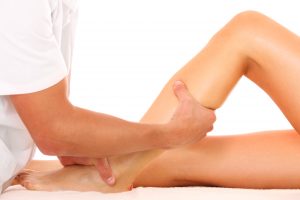 As you’ve been learning throughout our series on massage modalities, there are many kinds of massage. So far we’ve covered several, including Swedish Massage, Shiatsu, Neuromuscular Therapy, Connective Tissue Therapy, and Sports Massage. In this article, we will briefly go over the healthcare-related modalities medical massage, oncology massage, and pregnancy massage.
As you’ve been learning throughout our series on massage modalities, there are many kinds of massage. So far we’ve covered several, including Swedish Massage, Shiatsu, Neuromuscular Therapy, Connective Tissue Therapy, and Sports Massage. In this article, we will briefly go over the healthcare-related modalities medical massage, oncology massage, and pregnancy massage.
Medical Massage
Doctors sometimes prescribe massage therapy to their patients in order to achieve a specific result. Medical Massage treatments can consist of a variety or combination of modalities all focused on treating the specific area of the body prescribed by the client’s physician. Some examples of the conditions that a doctor may prescribe massage therapy for are carpal tunnel syndrome, shin splints, tennis elbow, and sciatica.
Oncology Massage
Someone who has been told they have cancer may go through a state of shock, disbelief, denial, and/or fear, and Oncology Massage can help throughout all these stages, as well as the ones that follow. Oncology Massage lowers cortisol and epinephrine levels, which reduces stress. It can also decrease the symptoms of pain, depression, anxiety, fatigue, and nausea felt by clients suffering from cancer. Massage is helpful throughout all phases—diagnosis, treatment, and recovery, and it can also help clients maintain a more positive outlook.
Pregnancy Massage
Primarily using techniques from Swedish Massage, pregnancy massage aims to relax the muscles and improve lymphatic and blood circulation through the use of mild pressure. When an expectant mother undergoes massage therapy, she benefits from mood regulation, improved cardiovascular health, less stress, relief from muscle aches and cramps, and much more. Pregnancy massage sessions usually last one hour and are usually conducted on a pregnancy massage table or with special pillows called bolsters.
As always, confirm the types of massage therapy you’re allowed to practice in your area as regulations vary from state to state. This information can usually be found on your state’s occupational licensing or health department websites. If you want to specialize in any of these forms of medical massage, you can take CE (Continuing Education) courses after graduation.